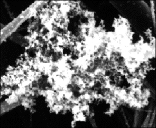Lidar Shows How Pollutants Stack up
Jean Progner KingResearchers at the University of Lyon are using lidar to create a three-dimensional map of air pollution. Although lidar has been used to map the atmospheric distribution of such noxious gases as nitrous oxide, sulfur dioxide and ozone, the technique for optical mapping of solid particles in three dimensions is still under development.

Researchers are using lidar to measure the size, composition and distribution of soot particles.
Jean-Pierre Wolf and his team at the University of Lyon I -- working with the city's Department of Urban Ecology -- analyzed the particles with a differential absorption lidar system based on a Ti:sapphire-pumped optical parametric oscillator. The system is similar to that used in the team's previous work (see Photonics Spectra, April 1994, pp. 97-100) but extends into the mid-IR. The researchers also supplemented their lidar system with new inversion algorithms invoking fractal models, and scanning electron microscopy and electron-excited x-ray microanalysis.
Earlier work was essentially qualitative, measuring overall particle density, but the new mappings show the number of particles of specific sizes and shapes at any location over the city. The rhinopharyngeal system filters out particles larger than about 1 µm; smaller particles are deposited in the lungs, where their effects are noxious.
To obtain 3-D profiles of individual particles and their distribution in space, the researchers needed to know their light-scattering properties. Without this information, the data obtained from lidar measurements could not be broken down for use in identifying individual particle types. Somewhat accurate information was already available for such smooth particles as the products of soil erosion, but was not for more complex particles such as those found in soot from vehicle exhaust.
These latter particles, Wolf said, have a fractal-type surface, making analysis difficult.
LATEST NEWS
- Exail Signs LLNL Contract, Partners with Eelume Apr 26, 2024
- Menlo Moves U.S. HQ: Week in Brief: 4/26/2024 Apr 26, 2024
- Optofluidics Platform Keys Label-, Amplification-Free Rapid Diagnostic Tool Apr 25, 2024
- DUV Lasers Made with Nonlinear Crystals Enhance Lithography Performance Apr 25, 2024
- Teledyne e2v, Airy3D Collaborate on 3D Vision Solutions Apr 24, 2024
- One-Step Hologram Generation Speeds 3D Display Creation Apr 24, 2024
- Innovation Award Winners for Laser Technology Honored in Aachen Apr 23, 2024
- Intech 2024: AI Arrives on the Shop Floor Apr 22, 2024
